New Delhi: The reporters have long gone from the strife-torn streets of Manipur, as have the cameras and politicians offering their fleeting sympathies. The violence on the streets has given way to a fragile, partitioned peace. But a battle over the ‘truth’ rages on—in books.
The story of the Manipur conflict—the brutal ethnic clash between Kukis and Meiteis that left over 200 dead, more than 15,000 injured, and around 60,000 homeless—is being captured in a sudden flood of new literature. At least eight books by Manipuri writers have been released between July 2023 and June 2024.
Almost like ink flowing from wounds, stories are being penned with an urgency that mirrors the chaos around them. And each one claims to set the record straight and bust myths surrounding the ongoing conflict. But the narratives differ depending on which side they represent, Meitei or Kuki.
“By presenting facts and figures through these books, we aim to help people see and understand the conflict more clearly,” said 31-year-old Janghaolun Haokip, information secretary of the Kuki Inpi, the apex body of Manipur’s Kuki-Zo-Hmar community. “This way, they can grasp what justice means for the people of Manipur and how it might be achieved in the middle of the ongoing conflict.”
Haokip has written a book too— Zalen Awgin: The Voice of the Revolution, a collection of 41 short essays on the various sociopolitical struggles of the Kuki people. Written in the Thadou-Kuki dialect, it was launched in Kangpokpi in June with a panel discussion.
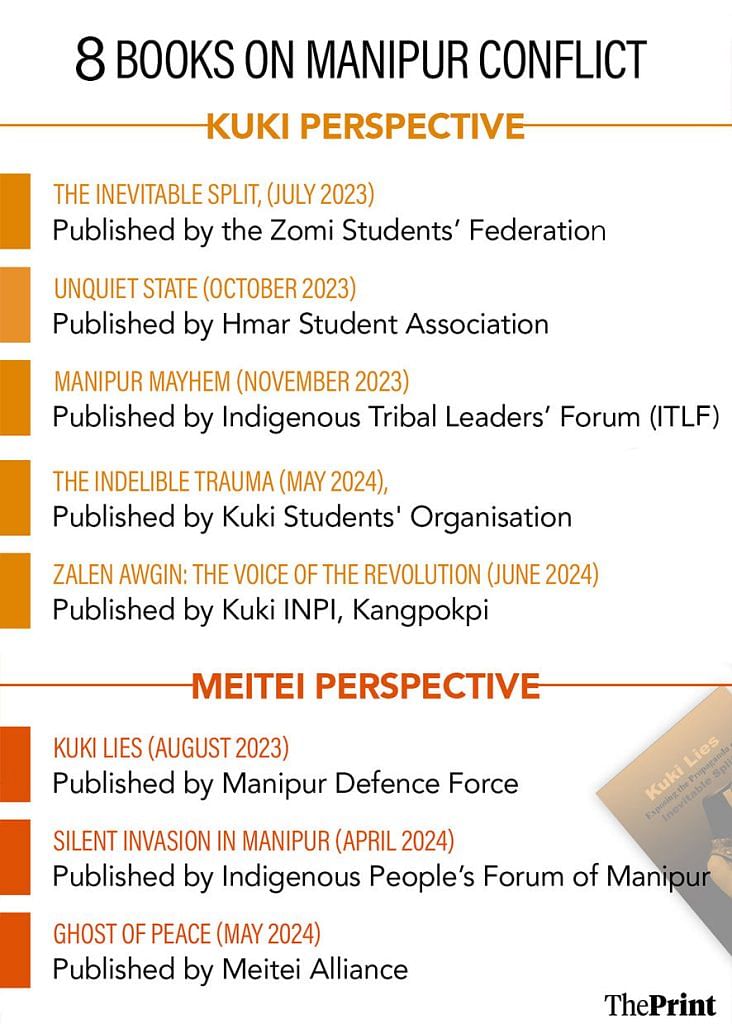
Haokip said he always wanted to write a book, but never thought that this crisis would inspire his first. For him, the new wave of books is not just about communicating ideas but also about assertion and galvanising support for a struggling community.
“While documenting what is happening in Manipur through these books is important, there is another key factor: reaching out to people to garner their solidarity with those who are suffering,” he said.
On the ground, Kuki ‘volunteer’ fighters are seen as heroes defending their homeland, while writers are capturing the ideological foundations of this struggle.
Also Read: 1 yr after Manipur violence, missing weapons, armed groups & extortion are keeping state ‘volatile’
‘A value-based war’
When the Manipur conflict erupted in May 2023, it unleashed not just violence but also a race to document the unfolding tragedy.
Within just three to four months, books began to emerge—a speed and intensity rarely seen in other conflict zones. Unlike in Kashmir or Nagaland, where it took years for literary voices to break through, Manipur’s writers seem driven by a deep need to make sense of their rapidly changing world and to legitimise their conflicting truths through their books.
ThePrint identified eight such books on the Manipur conflict, of which five were from the Kuki perspective—Unquiet State (October 2023), The Indelible Trauma (May 2024), Manipur Mayhem (November 2023), The Inevitable Split (July 2023), and Zalen Awgin: The Voice of the Revolution (June 2024). The three volumes from the Meitei side—Silent Invasion in Manipur (April 2024), Ghost of Peace (May 2024), and Kuki Lies (August 2023)—were all slimmer volumes co-authored by Dr Malem Ningthouja, a prominent Meitei researcher based in Delhi.
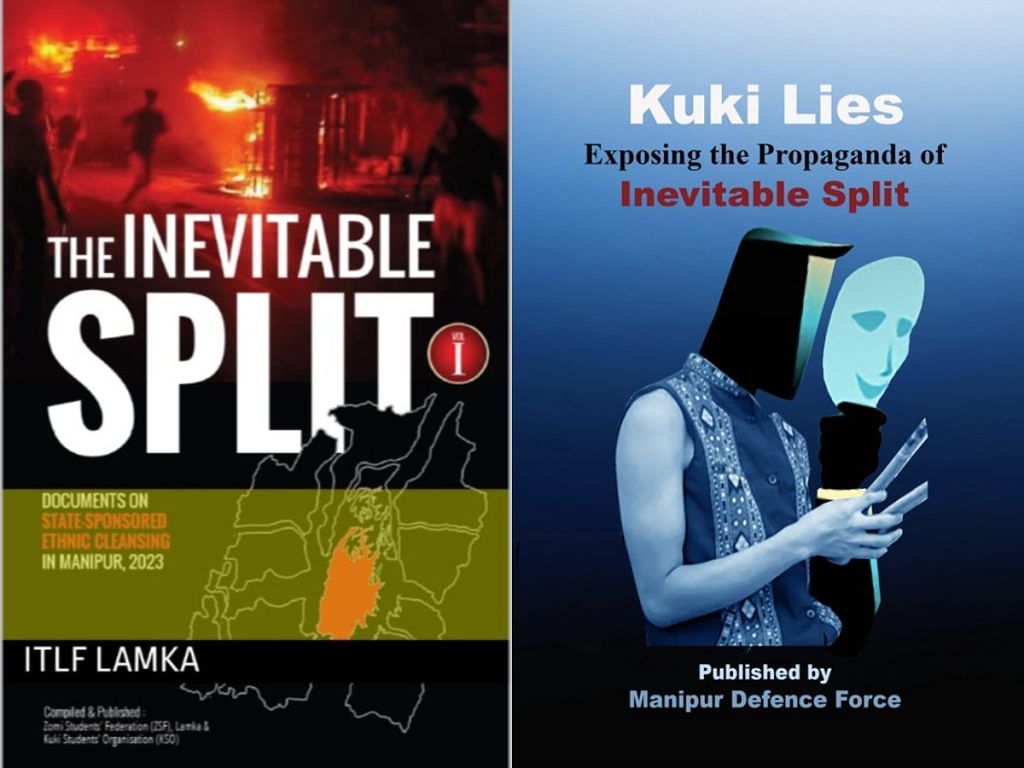
For Manipur observers, it’s unsurprising that Kuki publications dominate this wave of books. For the community, this is their chance to address long-standing grievances. The Manipuri-speaking Meiteis make up about 53 percent of Manipur’s population of 28 lakh, mostly in the more developed Imphal valley. The Kukis, around 28 per cent of the population, live primarily in the hill districts like Churachandpur and Kangpokpi, where they’ve long complained of having fewer opportunities and services compared to those in the valley.
“These books have come out while the conflict is still unfolding and society is deeply divided, so it’s likely they were written in desperation and rage,” said Rohin Kumar, a New Delhi-based researcher and author of Lal Chowk, a Hindi book on Kashmiri stories, who has focused on Manipur for the past five years and written many despatches from the state.
Not all of us (Kukis) are poppy cultivators. Not all of us are dealing in drugs. We also have our own voice. We also have our own narrative. Let’s tell the world to listen to us. This is what we have with us now
-PhD scholar and contributor to ‘Unquiet State’
Most literature on Manipur, he noted, has centred on the Meiteis—their struggles with AFSPA, their cultural roots, and their political battles. Much of the canon of books on Manipur in the last couple of decades has been authored by Meiteis, such as Daughters of Manipur (2016) by Dr Ch Jamini Devi and Early Meitei History: Religion, Society and the Manipur Puyas (2009) by Rena Laisram. Naga voices have come to the fore as well, through books like Revolutionary Movements in Manipur (2005) by N Joykumar Singh and Vales of Tears: Untold Stories of Violence in Manipur (2020) by John S. Shilshi. But Kuki perspectives are conspicuously absent.
This conflict, Kumar suggested, has made the Kukis realise their own history has been overlooked, pushing them to start documenting their experiences with new urgency.
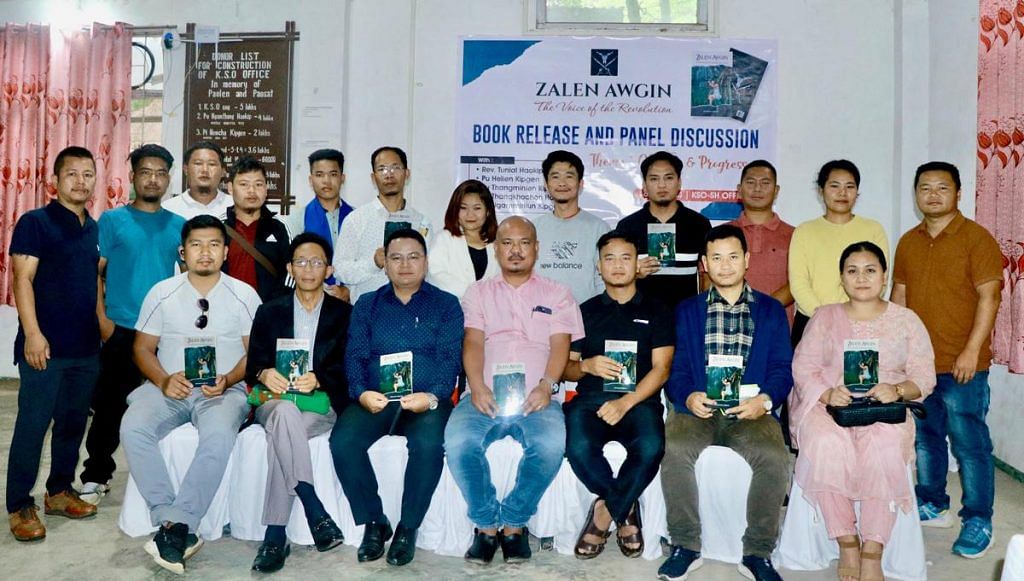
The flurry of books from the Kuki side, according to Kumar, shows how the current conflict has evolved into a “value-based” war. On the ground, Kuki ‘volunteer’ fighters are seen as heroes defending their homeland, while writers are capturing the ideological foundations of this struggle
“It’s about the values the community now upholds, and literature plays a crucial role in consolidating and amplifying these narratives,” Kumar added.
The wounds being addressed through these books are not just fresh ones—they also include old scars.
Kuki anger and assertion
Even in the thick of the conflict, Kuki writers wasted no time in putting their experiences to paper.
One of the earliest and most hard-hitting publications, Manipur Mayhem, was released in October 2023, just six months after the violence erupted. Published by the Indigenous Tribal Leaders’ Forum (ITLF), this book offers a harrowing account of the bloodshed, with firsthand stories and photographs from those who lived through it.
It recounts the beheading of David Theik, the tragic death of one-month-old Isaac due to a lack of medical care, and the brutal attack on Jamngaihkim Gangte, who lost her mother and brother. The book lists 146 victims as of October 2023, referring to them as “Our Martyrs”.
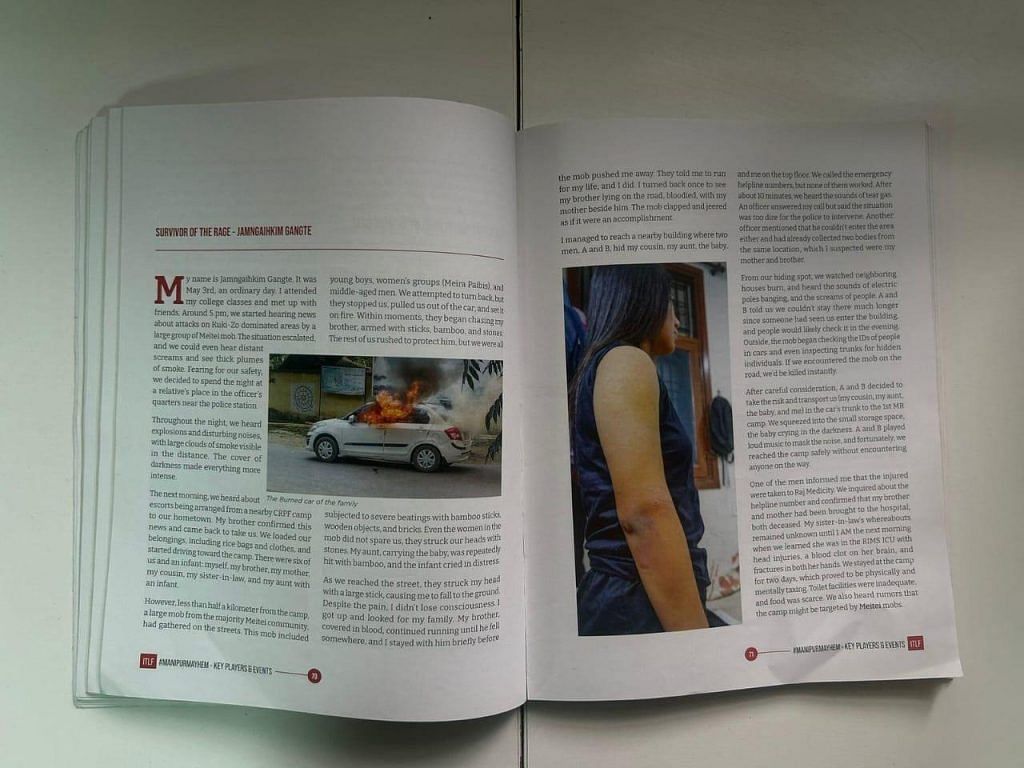
But the wounds being addressed are not just fresh ones—they also include old scars.
One of the few things both communities agree on is that the ongoing conflict is not merely the result of recent violence but stems from a series of long-standing issues that have been building up over the years.
Some of these flashpoints are detailed in The Indelible Trauma, authored by 10 contributors from the Kuki Students’ Organisation, many of whom are scholars displaced by the conflict.
Released on 3 May 2024, during a protest marking one year of the conflict at Delhi’s Jantar Mantar, the book not only documents lives lost but also highlights key issues that have festered for years, such as the hill people’s grievances over budget allocations, the non-tabling of the Manipur Hill Areas Autonomous District Council Bill of 2021, the need for more universities and colleges in the hill areas, and their concerns over the Meitei community’s demand for Scheduled Tribe (ST) status—one of the triggers for last year’s conflagration.
The book includes images from a mass rally organised by tribal students from Manipur University in 2016, meetings of Hill Areas Committee (HAC) members in Imphal, and protest sites marked by burned tires during the failure to table the HAC bill.
Many men and women (at relief camps) were in tears, expressing their desire to go back and live with all their neighbours, whether Kuki or Meitei
-CPI(M) leader Annie Raja, member of the party’s Manipur fact-finding team
Unquiet State goes even further back. Also compiled by PhD scholars from Manipur currently based in Delhi, it features chapters on Kuki-Zo-Hmar history during the pre-Independence era. One chapter explores the community’s “indigenous roots”, drawing on historical records such as old photographs, artefacts, and colonial accounts by figures such as Major John Butler and Sir George Abraham Grierson. The photographs included date back to the 18th and 19th centuries, with one showing a “Hmar Cultural Troupe” sitting with Prime Minister Jawaharlal Nehru during a Republic Day celebration in 1959.
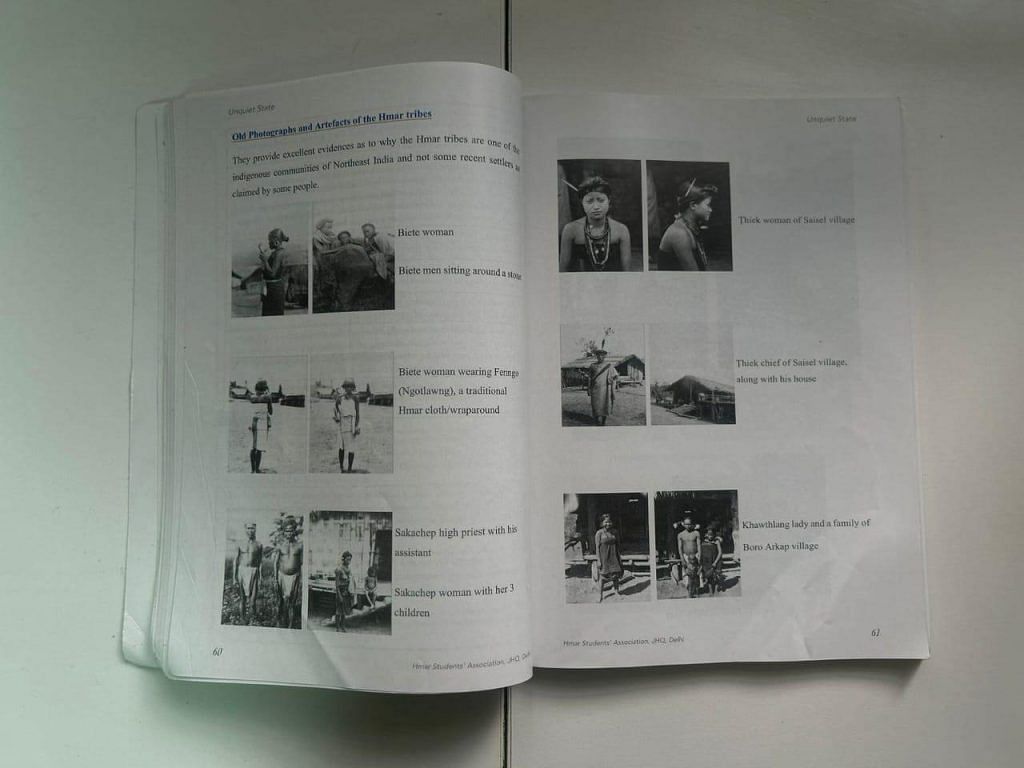
At the heart of these endeavours is a desire to assert Kuki identity and to affirm that their people have as much right to land and resources as anyone else.
“The Centre, state government, and particularly the Meiteis have been projecting us as illegal immigrants, claiming we’re not indigenous to Manipur,” said a PhD scholar from Churachandpur, who is currently based in Delhi and wrote a chapter for Unquiet State. “They’ve fabricated a narrative suggesting we came from Burma or China, and they accuse us of poppy cultivation and drug dealing.
This “Meitei-centric narrative”, according to her, tarnishes the image of the Kuki-Zo people.
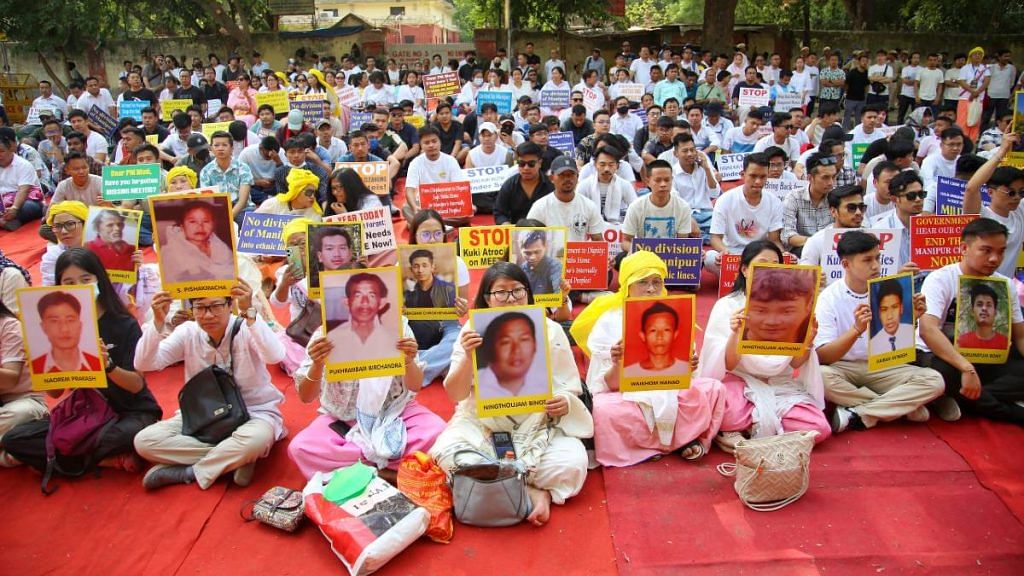
“Let’s tell the world that we are indigenous to this land,” said the 31-year-old PhD scholar. “Not all of us are poppy cultivators. Not all of us are dealing in drugs. We also have our own voice. We also have our own narrative. Let’s tell the world to listen to us. This is what we have with us now.”
CPI(M) leader Annie Raja, who visited Manipur with her party’s fact-finding team between June 28 and July 1, alleged that the conflict amounted to “state-sponsored violence” against the Kukis.
“If you look closely, people were already agitated by various issues, such as the state’s budget allocation—almost 85 per cent is spent in Imphal, with very little reaching the hill areas,” she told ThePrint. “Issues like inflation and national highway blockades only escalated the tension, ultimately leading to the events of 3 May.”
Amid the strongly worded essays, fact-checks, and academic analyses, the sentiment of reconciliation does occasionally glimmer through. In one section of Manipur Mayhem, it emerges in the universal medium of poetry.
Crossing swords & pens
Most of the books coming out of Manipur have been published by apex organisations or student bodies of the respective communities, intended more for media and community distribution rather than commercial gain.
But even with these modest goals, getting traction has been difficult. For instance, contributors to Unquiet State, published by the Hmar Student Association in Delhi, claimed they could only print 150-200 copies due to limited funds.
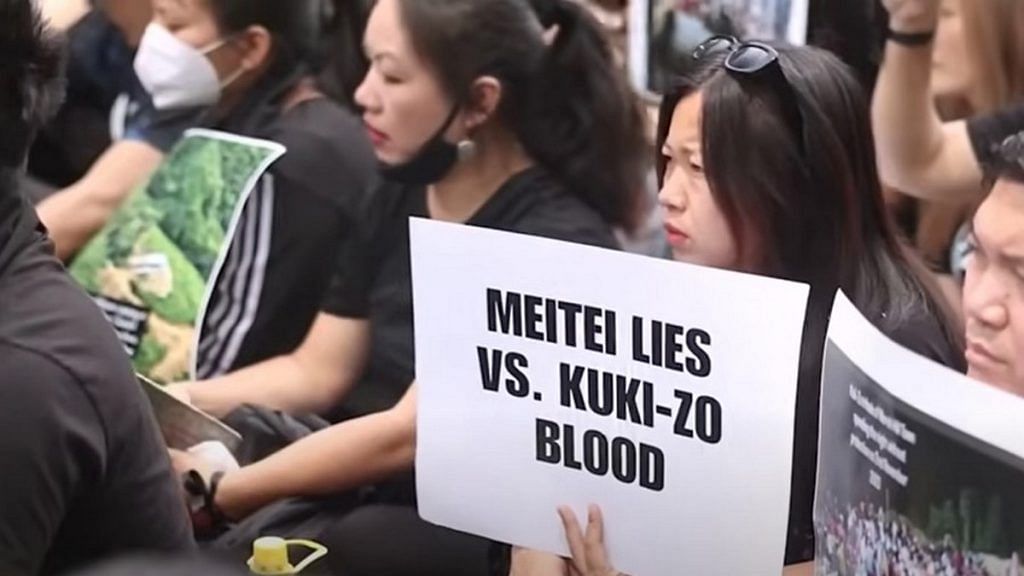
Out of all these publications, only The Inevitable Split is available on Amazon as a free Kindle download. Among the books from the Kuki side, it’s perhaps the most contentious of all.
This polemical publication by the Zomi Students’ Federation describes the conflict as a “dehumanising ethnic cleansing pogrom” against the Kukis. It claims that the tribals’ only desire is the “Separation Only Solution” to “level the playing field.” Unsurprisingly, the book has attracted several angry comments, with detractors calling it “fake information” and demanding its withdrawal.
Under normal circumstances, these books wouldn’t have seemed like propaganda, but given the context and timing, they’ve been perceived that way
-Malem Ningthouja, historian and author of books presenting Meitei side
The Inevitable Split has even spawned a direct rebuttal in the form of Kuki Lies: Exposing the Propaganda of Inevitable Split, published by the Manipur Defence Force. This 32-page booklet describes the violence as the “retaliatory consequences” of “Kuki aggression” and claims that local administration in Kangpokpi district “turned a blind eye” to the destruction of Hindu temples by “Kuki militants.”
“Contrary to the Meitei unrest, this act shows a well-designed strategy to destroy the indigenous place of worship and the sacred sites,” it reads.
One of the co-authors of Kuki Lies is historian Malem Ningthouja, the author of earlier books such as Freedom from India: A History of Manipur Nationalism (2011) and India’s War on Democracy: The Debate on AFSPA 1958 (2014).
Ningthouja lost his father in the conflict and has since also contributed to two other pro-Meitei volumes—Silent Invasion of Manipur and Ghosts of Peace.
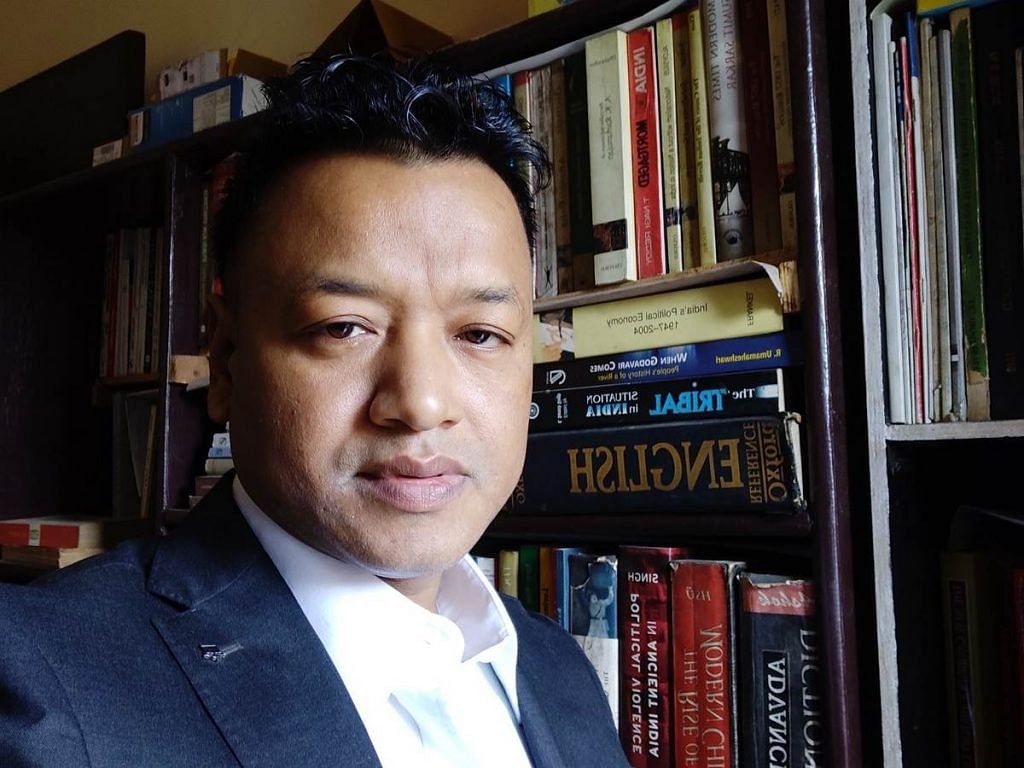
While many in the Kuki community have dismissed these books as propaganda, he maintains that he is merely countering misinformation from the Kuki side that has reached both national and international audiences.
“Under normal circumstances, these books wouldn’t have seemed like propaganda, but given the context and timing, they’ve been perceived that way,” Ningthouja said, referring to Kuki Lies.
In this book, he describes Kukis as “not indigenous to Manipur but wandering tribes who have migrated to Manipur in different waves.”
Another e-booklet the 68-page Ghosts of Peace, underscores the necessity of abrogating the Suspension of Operations (SoO) with Kuki armed militants. Published by the Meitei Alliance, Ghosts of Peace was released at an event at the Manipur Press Club in Imphal in the presence of Ningthouja, All Manipur Working Journalist Union president Bijoy Kakchingtabam, and retired IAS officer RK Nimai.
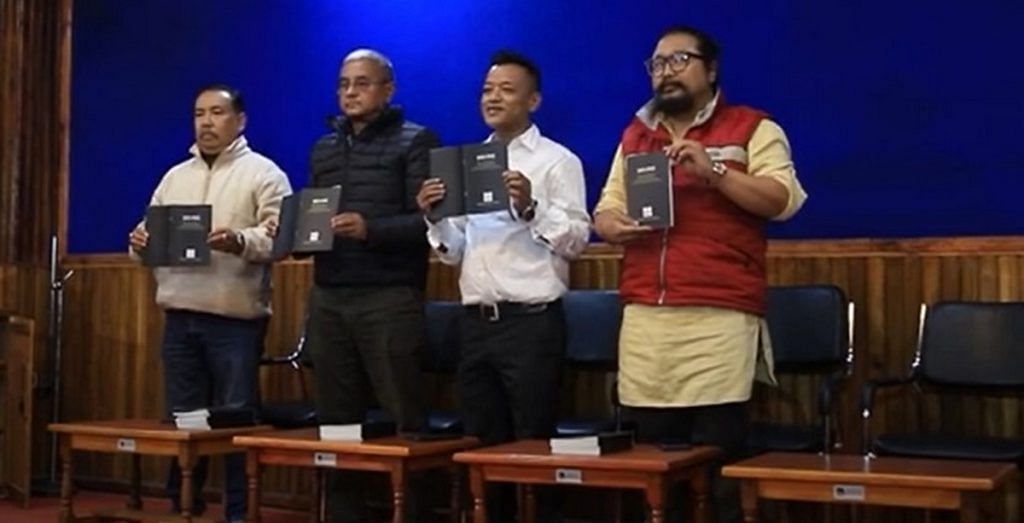
Meanwhile, Silent Invasion of Manipur, published by the Indigenous People’s Forum of Manipur, raises an alarm about a demographic influx, citing Census 2011 data. It alleges that “unregulated migration,” both from other parts of India and neighbouring countries, has resulted in “demographic shifts, land pressure, and social instability, severely affecting the indigenous population.” These dynamics, according to the book, have heightened tensions, particularly with the Kuki community, who are accused of “manipulating the system for territorial and political gains at the expense of the indigenous people”.
Ningthouja, however, insisted that these two books are not “immediate reactions” to a specific issue or incident despite their timing and are intended to be “purely academic” in nature.
Also Read: Manipur violence has a silent victim—broken marriages of Kuki-Meitei couples
Where prose fails, poetry speaks
Even as the conflict extends from the streets and relief camps to the pages of these books, CPI(M) leader Annie Raja suggested that beneath the anger lies deep hurt and a longing for reconciliation. While she commended the community-driven documentation efforts, she pointed out that many poignant stories remain untold, especially those of survivors in relief camps who yearn to return home and live peacefully alongside their neighbours.
“Many men and women (at relief camps) were in tears, expressing their desire to go back and live with all their neighbours, whether Kuki or Meitei,” she told ThePrint.
Raja also questioned whether current books or documents truly capture these personal experiences.
“If anyone wants to document their experiences, they should talk to the survivors, give them paper and pen, and let them write about their suffering and their longing for reconciliation,” Raja said. “I haven’t seen any that truly capture these sentiments.”
But amid the strongly worded essays, fact-checks, and academic analyses, this sentiment does occasionally glimmer through. In one section of Manipur Mayhem, it emerges in the universal medium of poetry.
“For in the end, we’re one human race, With dreams and fears we all embrace,” says one poem, titled ‘ Lands Divided by Lines Unseen’ by Hnunbiaklian Tangpua. “In the face of ethnic discord’s affliction, Let harmony guide our shared conviction.”
(Edited by Asavari Singh)



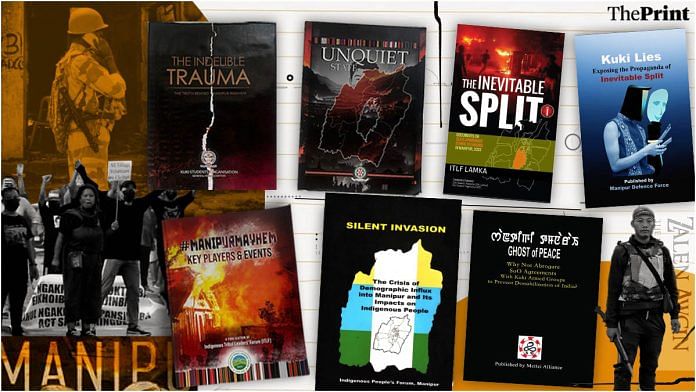



I am the author of ‘Vale of Tears: Untold stories of violence in Manipur’. I am a Naga, but the writer of this article mentioned me as a ‘Meitei’. In a complex setting like Manipur, such errors could invite multiple interpretations